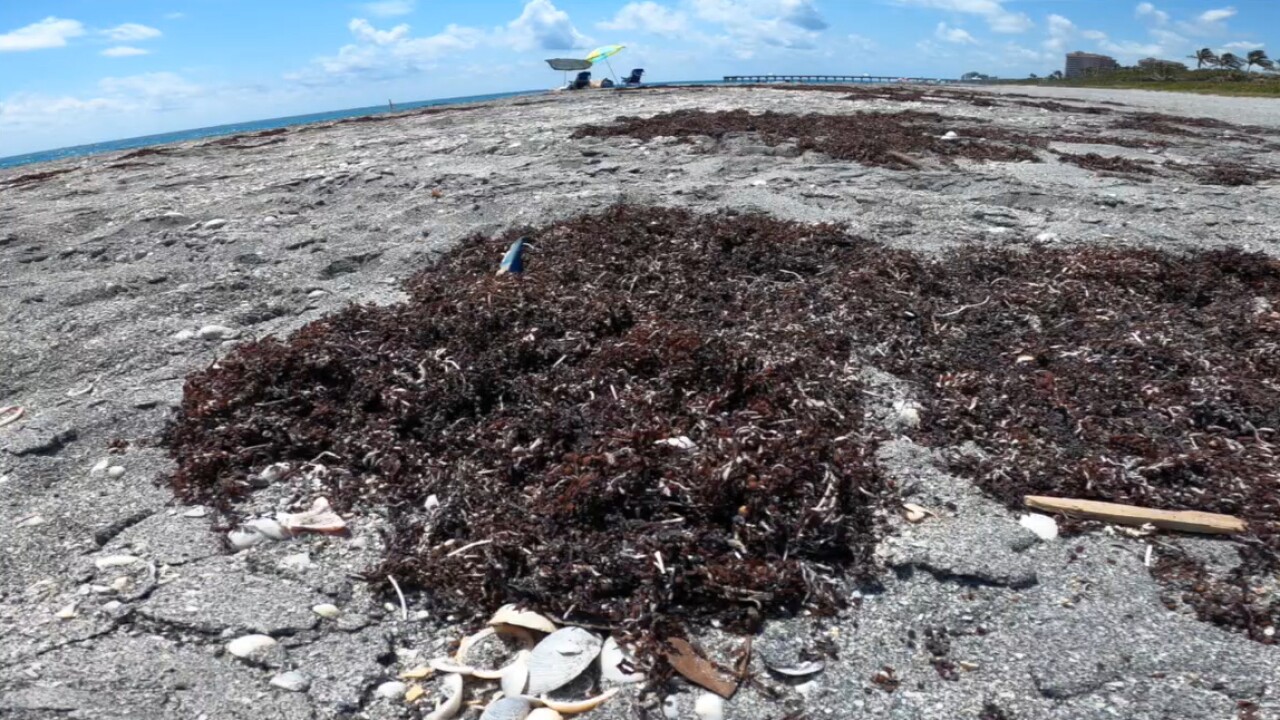BOCA RATON, Fla. — Anyone who's been to the beach lately knows there's a lot of seaweed.
Researchers at Florida Atlantic University said it's some of the most sargassum South Florida has seen on its beaches.
Crystal clear water and a light breeze is a perfect day at the beach for Vicki Reis.
"It is my happy place," Reis said.
Reis walks the beach every day and said it's the time of year when she notices the seaweed start to wash in.
"It has been coming in for a couple weeks now," Reis said.
For the past several years, scientists at FAU have noticed more sargassum in the ocean.
"We think of it as too much of a good thing," reseacher Brian LaPointe, who has studied sargassum since the 1980s, said.
His team's latest find is a 35% nitrogen increase in the sargassum tissue.
"It is like the canary in the coal mine, right? It is out there like a barometer of global change," LaPointe said.
LaPointe said a mixture of humans and the environment has led to the nitrogen increase.
Sargassum is used by sea life as a habitat at sea, but the study has found less living creatures in the seaweed.
LaPointe added the large blooms created problems for tourism on coastal beaches
Cities and counties have been spending millions of dollars to help get the seaweed off of their beaches.
"Some of those hotels on the beach, you will not stay there to stay with rotting," LaPointe said.
LaPointe said 2018 was the largest sargassum bloom and believes this year could be close to that.
The fix to the problem will need more research, but he said reducing our nitrogen footprint in the first place to start.
"The ultimate solution for South Florida is to clean up the water north of Lake Okeechobee," LaPointe said.





